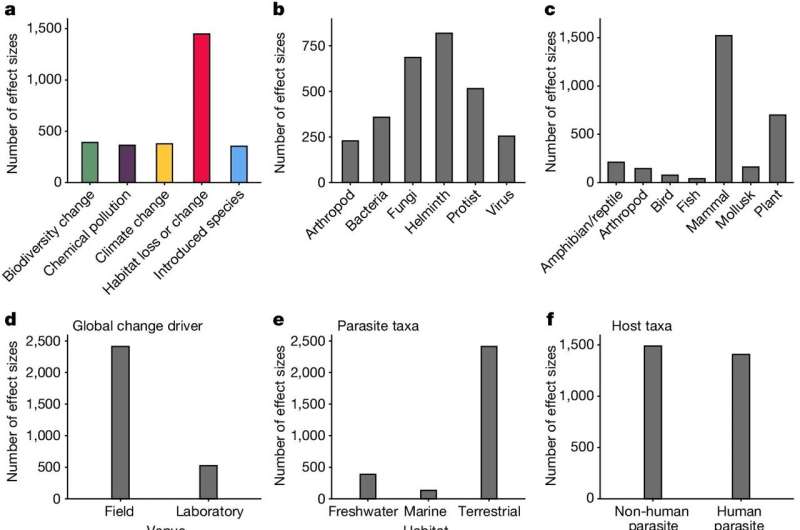This article has been reviewed according to Science X's editorial process and policies. Editors have highlighted the following attributes while ensuring the content's credibility:
fact-checked
peer-reviewed publication
trusted source
proofread
Big data helps determine what drives disease risk

Working with nearly 3,000 observations across almost 1,500 host-parasite combinations, researchers at Notre Dame University have found that biodiversity loss, chemical pollution, introduced species, and climate change, but not urbanization, are driving increases in infectious disease risk.
As the number of emerging infectious diseases in organisms across the tree of life, including humans, rises, it is becoming increasingly important to understand what drives disease spread and whether human actions are part of the cause. This information will aid in disease management strategies and predicting the potential for disease spread given a set of environmental or other changes.
These efforts are important not only for diseases that could infect humans but also for diseases in other animals that can lead to human disease. Diseases in plants can also have a massive impact on agriculture and food security.
Specifically, the new study published in Nature points to lowering greenhouse gas emissions and enhancing ecosystem management efforts as key steps in limiting the burden of diseases in humans, other animals and plants.
More information: Jason Rohr, A meta-analysis on global change drivers and the risk of infectious disease, Nature (2024). DOI: 10.1038/s41586-024-07380-6. www.nature.com/articles/s41586-024-07380-6
Journal information: Nature
Provided by National Science Foundation


















